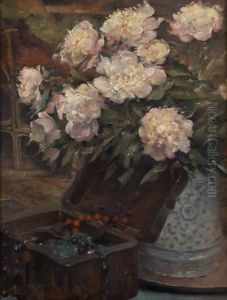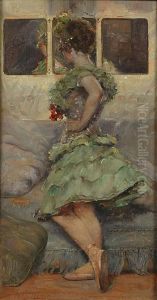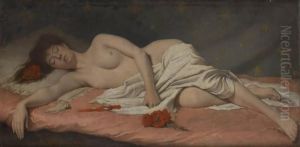Moreau Henry Paintings
Gustave Moreau was a significant figure in French Symbolist painting, known for his classical figures, mythological themes, and enigmatic compositions. Born in Paris on April 6, 1826, Moreau's work is characterized by its detailed ornamentation and rich color palette, which he used to explore the complexities of human emotion and the mystical. He was deeply influenced by the Romantic movement and was a contemporary of other Symbolist artists, though his work also presaged the Surrealist movement with its dream-like qualities and emphasis on the subconscious.
Moreau's parents encouraged his artistic talents, and he pursued formal training at the École des Beaux-Arts in Paris under François-Édouard Picot. Despite a somewhat traditional academic training, his work soon diverged from the prevailing styles of the time, focusing instead on biblical and mythological subjects infused with a personal and often enigmatic symbolism. One of his most famous works, 'Oedipus and the Sphinx' (1864), showcases his fascination with the mystical and his ability to convey complex psychological narratives through his art.
Throughout his career, Moreau remained somewhat aloof from the major art movements of his time, such as Impressionism, preferring instead to explore his own unique vision. His studio in Paris, now the Musée Gustave Moreau, was left to the French state upon his death on April 18, 1898, and houses a vast collection of his works, including paintings, drawings, and watercolors. Moreau was also a teacher at the École des Beaux-Arts, where he influenced a new generation of artists, including Henri Matisse, who was among his students.
Moreau's legacy is that of a visionary who sought to transcend the material world through his art, exploring themes of destiny, mythology, and the divine. His work is a testament to the power of imagination and continues to inspire and captivate audiences with its beauty and depth.



